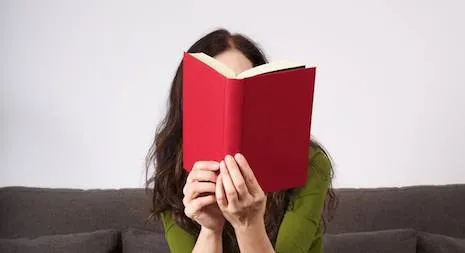
What I Learned from Reading Chick Lit for Research
This content contains affiliate links. When you buy through these links, we may earn an affiliate commission.
Before I decided to write about it for my thesis, I hadn’t really read any “chick lit.” I’d seen the movie adaptations of most of the quintessential ones (and loved them – no shame), but as interested as I was in a genre that was both best-selling and by/for/about women, I just hadn’t gotten there yet. So, thinking that I sort of knew what I was getting into, I stocked my shelves with pink books and spent the summer tearing through them.
I should mention: Scholars of chick lit tend to describe it as being “heroine-centered,” with the goal of portraying in some way the trials and tribulations of modern womanhood (a lofty goal). Traditionally, the protagonists are white, upper-middle class, heterosexual, cisgender, British and American women in their late twenties and early thirties. Since I was trying to stay loyal to where scholarship had already gone (the chick lit “classics,” if you will) these terms described the protagonists in every book I read. However, maybe the first thing I learned is that not all chick lit heroines fit into that category anymore. Like in the romance genre, bountiful subgenres exist. As well they should!
Here’s what else I discovered along the way.
1.) Every single protagonist was on a diet.
I may have noticed this because body image in chick lit is actually one of The Topics of my thesis, but I still wasn’t prepared for how thoroughly saturated these books were with body dissatisfaction. Whether they wanted to impress a guy, placate their mothers, or look like their invariably hotter and cooler best friends, weight loss seemed to be a shared obsession among the protagonists in all my books. Of course, maybe it’s because chick lit relies on the reader’s identification with the heroine — and what real-life woman is 100% happy with her body? Still, the recurrent theme made me uneasy.
The good part was that most of my protagonists found peace with themselves in the end (generally once their feelings were reciprocated by the male love interest, alas.) The best chick lit book for body positivity? Good in Bed by Jennifer Weiner — it features a confident plus-size heroine who, after much soul-searching, calls BS on weight-loss programs designed to tear women down. The worst? The original “chick lit” novel, Bridget Jones’ Diary by Helen Fielding. Bridget’s calorie counting and weight monitoring, intended for comic effect, reminded me uncomfortably of my own body-policing past.
2. The clothing makes the chick lit woman.
Much has been made in chick lit scholarship about the genre’s focus on shopping. (Stephanie Harzewski’s excellent book Chick Lit and Postfeminism goes into a lot of detail on the subject). Even with all the academic interpretations bouncing around in my head, though, I was surprised. These books operate on the ridiculous presumption that women with entry-level jobs can afford – or even think about affording – designer clothes. I started the summer as a fashion-conscious person, and I must have learned the names of 15 designers I’d never even heard of before. Sophie Kinsella’s Shopaholic series takes the trope to an extreme in what turned out to be one of the more stressful reading experiences I had. Other authors, like Plum Sykes in Bergdorf Blondes, sidestepped the “reality” issue by making their heroines privileged members of the Manhattan glitterati. In the words of yet another fictional fashionista, Carrie Bradshaw, I couldn’t help but wonder…are designer clothes really that relatable? Or is this a weird flip side to the diet issue – the idea that you’ll like your body more if there’s Chanel on top of it?
The most extreme example of commodity worship: Kinsella’s novel Remember Me?, in which the protagonist gets amnesia and wakes up with a perfect Pilates body, a rich husband, and a closet full of Calvin Klein and La Perla. Even less realistic? Shopaholic Takes Manhattan, also by Kinsella. After all she went through in the first book, we’re supposed to believe Becky Bloomwood didn’t learn her lesson about credit card debt?
3. Chick lit novels are not always “fluff.”
To my shock, I got emotional over these books. For some reason, I didn’t expect to. I expected to be in full research mode, and absorb these stories like a detached academic. But I saw shades of myself in many of these women. I laughed out loud while reading most of them. Good in Bed made me cry. The experience of reading chick lit all summer was interesting, and not just in a relevant-to-my-thesis way. I was a snob, and I’m sorry.
My favorite of the lot: Bridget Jones’ Diary, again. Despite the fact that Bridget spends the entire novel agonizing over a weight that Kim Kardashian’s spent months on Atkins to achieve, it’s a classic for a reason.
The one(s) I hurled at the wall: Something Borrowed and Something Blue, both by Emily Giffin. Have you ever been so mad at a character you can’t see straight?
After reading 18 chick lit novels, I am definitely no expert. I still feel that I’ve only scratched the surface. What I’ve learned most of all is that “chick lit” is way too broad a term for a category of novels that, despite the similarities I talk about here, is just as varied as the women that read them.
What are your favorite chick lit books? What do you like (or not like) about the genre? Let me know – it’s for school!









